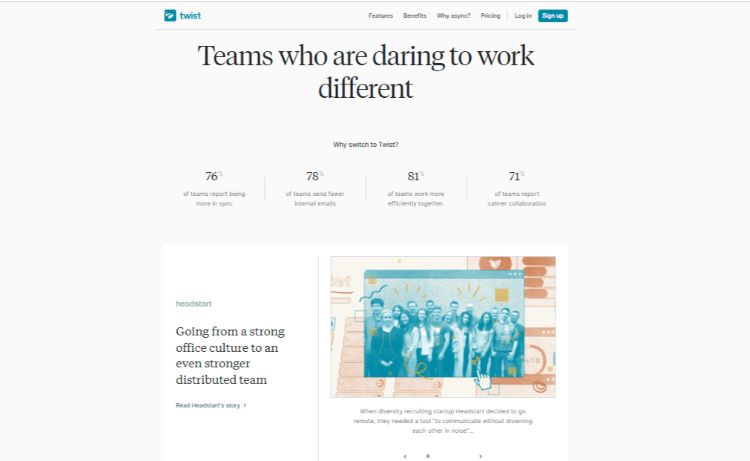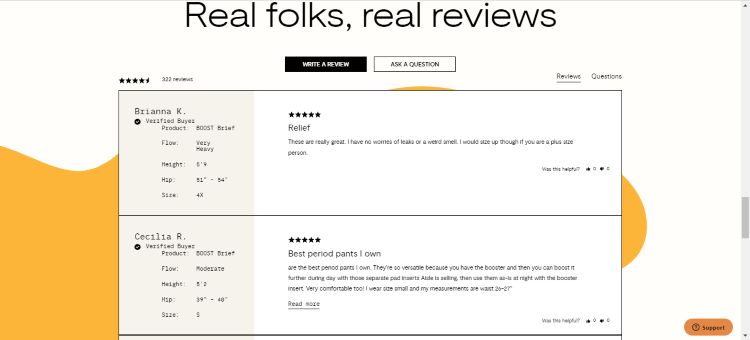Before a customer purchases a product, they often look for reviews or testimonials to help them decide whether to buy a product or service. Testimonials instill trust in potential customers. Those still deciding always want to see what others say about their experience.
If customers find the reviews are mostly positive, this may persuade them to buy. Yet, what if there was a way to nudge your customers in the right direction? How can you build more credibility and trust with leads? One of the best ways to increase customer interest is by adding a testimonial page to your site.
What Is a Testimonial Page?
A testimonial page is a dedicated section on a website where businesses showcase positive feedback from their customers or clients. Testimonials are usually direct quotes from customers expressing satisfaction with the product or service they bought from the company. These statements are powerful endorsements — enough to build trust with potential customers visiting the website.
However, testimonials can vary in format — some are short and to the point, while others may be detailed stories about a customer’s experience. Oftentimes, you’ll see them accompanied by the customer’s name, photo or even a video to add a touch of authenticity and credibility.
Overall, a testimonial page is a compelling tool for businesses wanting to boost sales because they are real-life examples of satisfied customers. In turn, this convinces new visitors of the value and reliability of the company or its products.
Why Do You Need a Testimonial Page?
A testimonial page is crucial for several reasons. First, it builds trust. Customers are unable to see what your product or service is like because it’s online.
This digital barrier and customers’ weariness of what they purchase online make them hesitant. Therefore, they need social proof to show how others have benefited from the product or service. This reassures potential customers that the product or service offering does what it promises, making them more likely to choose your brand.
Secondly, testimonials enhance credibility. Potential customers want to learn more about others’ experiences. If you show how positive those experiences have been for past customers, you show how valuable your offerings truly are. At the same time, this builds a stronger reputation for your business in the market, and customers will be more likely to purchase.
Another reason you need a testimonial page is to improve your engagement and SEO. Engaging stories keep visitors on your site longer — this increased dwell time can positively impact your search engine rankings.
Types of Testimonial Pages
Testimonial pages can come in different formats. As such, you may want to consider the following types and which will fit your website best:
- Quotes: These are the most common and straightforward. They’re brief, direct statements from customers praising your product or service. They’re also easy to read and be visually impactful when paired with a name and photo.
- Audio and Video: These offer a more engaging way to present customer feedback. Videos especially can be compelling, showing real people speaking passionately about their experiences.
- Case studies and stories: They provide an in-depth look at a customer’s experience, detailing their problem and how your product or service provided a solution.
- Social media: Screenshots or links to positive comments and reviews are effective since they come from a public, uncontrolled environment. This showcases how genuine the customer satisfaction is to potential customers.
- Influencer: Endorsements from influencers are a great way to build trust and visibility for your brand.
Examples of Testimonial Pages
Here are a few ways other brands have created their testimonial pages.
Customer Stories

Source: https://twist.com/
Twist showcases its approach to a testimonial page by starting with statistics, which immediately convey the benefits of its service. The visual of a happy, diverse team supports the message that Twist aids in creating stronger, distributed teams. It also incorporates customer quotes with links to detailed stories. This invites visitors to explore real-world successes, effectively increasing engagement and building trust.
Quotes From Reputable Sources

Source: https://todoist.com/
Todoist’s testimonial page effectively uses a quote from a reputable source, The Verge. This third-party endorsement by a well-known tech outlet provides an authoritative perspective, increasing the brand’s credibility. The page further clarifies the benefits of their product through a visual representation of the app’s features.
It demonstrates how easy or complex your to-do lists can be, showing how anyone can use this platform. The page layout also helps visitors quickly grasp the product’s versatility, a key selling point for users looking for customizable productivity tools.
Real Reviews

Source: https://periodaisle.com/
Aisle’s testimonial page presents “Real folks, real reviews,” connecting potential customers with authentic user experiences. The detailed, personal reviews and the product image help visitors envision the product in their own lives.
Verified buyer tags and the option to read more about each story show how in-depth and authentic these reviews are, which fosters trust. This approach is effective as it leverages transparency and true customer satisfaction, reassuring potential buyers about their purchase decisions.
Best Practices for Testimonial Page Design
When designing a testimonial page, here are a few best practices to keep in mind.
1. Use Diverse Testimonials
Represent various voices by including testimonials from people across different roles and industries. Doing so shows how versatile your product is while it also demonstrates a broad appeal. At the same time, it ensures visitors from all backgrounds can relate to at least one review.
2. Choose Testimonials With Numbers
Numbers catch the eye and establish credibility. Choose testimonials that mention specific benefits with numerical results. For example, a testimonial could have “increased sales by 50%” or “saved 10 hours a week.” This provides concrete evidence of your product’s impact, making it more likely for customers to purchase.
3. Incorporate Visuals
Pair testimonials with photos, videos or icons to make them more trustworthy and engaging. Visuals can break up tests, add a human element and convey the emotion behind the customer’s story. This makes the testimonials more relatable, increasing the connection of your product to the potential customer.
4. Limit Your Number of Testimonials
Approximately 91% of people stated they look at at least one review before deciding to buy, and 12% have said they read more than ten reviews. Providing any more testimonials than that can be overwhelming. Curate a selection that represents your best feedback and covers various scenarios. Then, limit your testimonials to about five to 10. That way, your page is digestible and allows each one to stand out.
5. Test Your Testimonial Page
Regularly test different aspects of your testimonial page, such as layout, amount of text and which testimonials convert best. Use A/B testing to see what resonates with your audience most and adjust accordingly to maximize your results.
Design a Testimonial Page That Generates Real Results
Building a testimonial page is a strategic process. Yet, once you have everything planned out and refined as necessary, you can yield immense results for your business. Remember, testimonials should be stories of success and satisfaction. So craft a page that connects to your audience, and watch as it transforms your visitors into customers.


